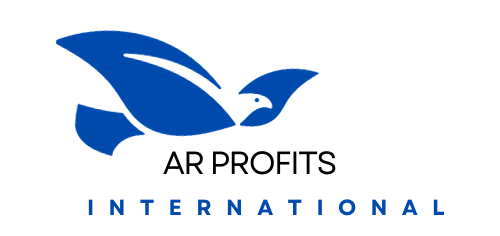What You Need to Know About Content Creation
Each piece of content – be it an article, blog post, white paper or video – should serve a purpose. Readers like to gain the information they require rather than get entertainment value alone. So let us dive into Content Creation as a method to make money online.
Content creators are an indispensable asset to any enterprise organization, helping bring ideas to life through high-quality writing that ranks on search and drives conversions.
Leveraging YouTube for Ad Revenue
YouTube is one of the world’s premier video-sharing platforms with billions of monthly logged-in users, providing producers a powerful way to showcase their work and reach an international audience. Furthermore, it has several revenue streams that encourage content creators to produce high-quality videos such as advertising revenue, sponsored content fees, and subscription fees – further incentivizing producers’ creativity.
Ad revenue is YouTube’s primary source of income. Utilizing advanced ad technology to target specific audiences more effectively and drive revenue for content creators. YouTube’s ad revenue model offers an efficient solution to support operations while incentivizing creators to produce engaging videos.
Types of ads
Optimizing ad revenue generation requires familiarizing oneself with all of the available ad formats on a platform, including skippable and non-skippable ads, bumper ads, and overlay ads. Each format offers distinct advantages and benefits to viewers and content creators.
Bumper ads tend to generate higher click-through rates than other ad formats and are an effective way of supplementing video content, yet require viewer transparency and an obvious call-to-action. Overlay ads, on the other hand, are effective revenue generators when properly placed – as long as they do not interfere with viewing experience.
Ad placement
YouTube provides dynamic ad placements to encourage viewers to interact with video content more dynamically. Cards allow viewers to take actions such as watching another video, purchasing products or making donations; video content may also feature clickable links that direct viewers directly to websites or product pages – these ad placements can significantly boost viewer engagement and revenue for content creators.
Engaging audiences through advertising is beneficial not only to content creators but also advertisers. According to YouTube, viewers prefer ads that do not interrupt their viewing experience and offer pertinent messages; therefore, the platform has developed new ad experiences based on research and consumer feedback.
Content creators can leverage video intros to drive ad engagement, make their videos more attractive by adding interactive elements like thumbnails and playlists, experiment with different ad formats to maximize revenue, collaborate with fellow YouTubers to promote their videos, and drive additional views and engagement for increased viewership and ad revenue.
Creating Compelling Content
Once your content planning and ideation process is complete, it’s time to create your content. While this step requires much time and energy from your team, it is the most vital one in terms of ensuring its optimal performance.
Know your target audience
Before creating content, it’s essential that you gain a full understanding of who your target audience is and their key pain points. This will enable you to produce more targeted and relevant posts, which your target audience will engage with and share across their networks.
Types of content
Apart from understanding your audience, it’s also essential that you identify what type of content will work best for your business. This depends on its goals and objectives – for instance if your aim is to raise brand awareness then blogging or social media might work better; conversely for conversion-focused campaigns using video or other visual formats could work more effectively.
No matter what types of content you decide to create, it is key that they remain true to the voice and tone of your brand. This will differentiate you from competitors while simultaneously making audiences feel connected with you and creating lasting brand relationships.
Call the readers or viewers to action
An effective piece of content must also encourage readers to take the next step – whether that means clicking through to read more, downloading additional material or leaving their contact info behind. In order for your piece of writing to accomplish this goal, its language and presentation must encourage readers to make the leap from reading to action.
Generating ideas
Are You Struggling with Generating Ideas for Content Creation? There are various methods for brainstorming new content creation ideas, from team meetings and resources available already, to using current performance data, competitor analysis, industry trends and keyword research as sources for potential ideas. It is also wise to include subject matter experts when conducting brainstorming sessions to ensure your new material remains accurate and timely.
Building Your Channel
No matter the form your content takes– blog posts, videos, podcasts, infographics– all pieces should share certain key components. Starting with having a clear purpose; understanding who your target audience and their needs; then crafting something engaging yet useful to that audience should all come into play for successful content pieces.
Time your content
Timing your content creation is also essential for its impactful release. Make sure it lands when its impact will have maximum resonance amongst your target audience – posting regularly or around holidays/events can have the greatest result.
Your content creation plan must also include identifying who needs to participate and setting clear timelines for completion, so as to prevent last minute scrambling to meet deadlines and ensure high-quality creation.
Once your process and timeline are in place, the next step should be content creation. With effective planning and ideation behind you, this should be relatively painless; but don’t forget that content creation is an ongoing process; be open to changing plans as new insights into your audience come through – don’t be afraid to adjust as necessary.
Utilize customer feedback as another great way to generate ideas for content creation. This could involve conducting online surveys, social media conversations or direct contact with your customer base – even just asking your customers direct questions will provide invaluable insight you can use to craft engaging and informative pieces of writing that engage and inform audiences. You could even use this data to identify gaps in your existing offerings: if competitors publish articles about a topic you don’t, this may present an opportunity to expand on it and establish yourself as the expert within your niche space.
Enabling Monetization
Content creation is an essential component of digital marketing strategies, drawing in customers while engaging them with your brand. Consider the multiple aspects involved with producing successful pieces of content; therefore, before you beginn your work on one, it is vital that you take time to consider these carefully.
Plan your content creation work
Before beginning any content creation project, it’s essential to clearly establish its scope and schedule. This will enable you to determine how much work you need to complete as well as any resources necessary for its completion.
Once you have established your project scope and schedule, it is time to develop a content workflow plan. This plan will provide your team with the necessary structure when producing new content. You will also set realistic expectations and make sure everything gets done on schedule.
Start building your content workflow by splitting your team into two teams and giving each a task to focus on. Provide them with a generic workflow diagram, asking them to capture each step with post-it notes (for in-person workshops) or visual tools like Mural for virtual sessions – this will result in an initial draft workflow you can refine further based on feedback and insights from team members.
Once your workflow is in place, it’s essential that you review it periodically. Take advantage of content audit results to identify any areas for improvement or optimization and use this knowledge when planning future projects.
By following these best practices, you can start creating more effective and engaging content for your target audience. Your goal should be to get them engaged with your content so they become customers. If you adhere to these tips, your work may stand out from others and it will most likely be shared more often.




